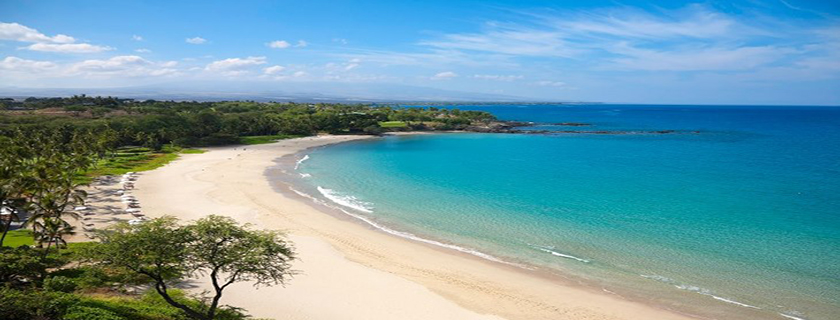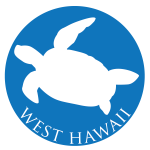West Hawaiʻi
The northwest coast of the island of Hawaiʻi is a unique habitat known for its clear waters and vibrant coral reefs. West Hawai‘i contains one of the state’s longest contiguous coral reefs, supporting an abundance of corals and fish, of which nearly a quarter are found nowhere else in the world. The area is home to several endangered or threatened species, such as Hawaiian Monk Seals (ʻīlio holo i ka uaua), humpback whales (Koholā), and green sea turtles (Honu).
The coastal zone includes Hawaiian fishponds and the highest concentration of anchialine pools in Hawai‘i. In addition, several ecosystem types converge in this area, including lava fields, small sand beaches, coastal estuarine habitat and lowland dry forests.
Threats
From its highly significant cultural sites to its thriving resort industry, West Hawaiʻi is important to the region’s economy, history, culture and environment. However, numerous threats are currently leading to habitat loss in the area.
- Climate Change is predicted to alter coastlines due to sea level rise; coastal salinity and habitats; the frequency of storms and precipitation; increased ocean temperature and acidity; and loss of reef habitat.
- Increasing Nutrients, or eutrophication, promotes algal blooms, increases in harmful bacteria, and coral disease.
- Erosion and Sedimentation occur because the landscape is naturally arid, and uncontrolled grazing by feral mammals has decreased native vegetation.
- Wildlife Interaction by beach and ocean users, with threatened species of whales, dolphins, sea turtles and the Hawaiian Monk Seal, disrupts their behavior and alters their habitat.
Objectives
- Improve coral health by reducing land-based pollutants, such as sediments and nutrients
- Reduce vulnerability of communities and natural resources to the localized effects of climate change
- Ensure that communities are informed and contribute to the sustainable use and restoration of natural resources
- Provide better management tools and easily accessible information for informed decisions
Details about the objectives and specific actions NOAA is implementing can be found in the West Hawaiʻi Habitat Focus Area Implementation Plan.
Collaborators
NOAA offices and programs in the Pacific Islands region are working with federal and state agencies, local communities, non-profit organizations and businesses to improve ocean health along West Hawai‘i’s coastline. Pooling resources and focusing efforts in this area can make a larger collective impact toward creating a more resilient landscape around the shared goals of healthy reefs, abundant fisheries and thriving communities.
Accomplishments
- Worked with USGS to identify erosion hotspots or land areas impacting water quality in Pelekane Bay, and worked with partners on mitigation and restoration actions.
- Conducted water quality and coral health surveys to assess impact of nutrients near resorts, and are working with resort owners to reduce those impacts.
- Conducted coral reef resilience surveys and identified resilient reefs and potential management actions.
- Established Kai Kuleana and Hui Loko community networks with over 15 coastal communities.
- Restored several acres at Kiholo Fishpond.
- Conducted benthic habitat mapping to characterize deeper areas of the coral reefs.


